HIGHLIGHTS
* Martin Cooper, the father of the cellphone, spoke recently about his latest smartphone.
* The pioneering inventor is credited with having developed the Motorola DynaTAC 8000x.
* Cooper today uses a top variant of the latest generation iPhone.
Which mobile device would you expect the inventor of the mobile, handheld phone to use? As it aptly turns out, the father of the cellphone is suitably savvy, even at the age of 94.
Martin Cooper, famously known for his three-decade stint at Motorola and for having invented the world’s first mobile phone and placing the first mobile phone call, recently offered an interview to French publication and wire service Agence France-Presse (AFP).
During the interview, the pioneering inventor spoke about a number of key points, which included what his latest smartphone is, what he thinks of the modern-day mobile phone industry, and the things that he is concerned and optimistic about.
The latest Smartphone of Cooper’s
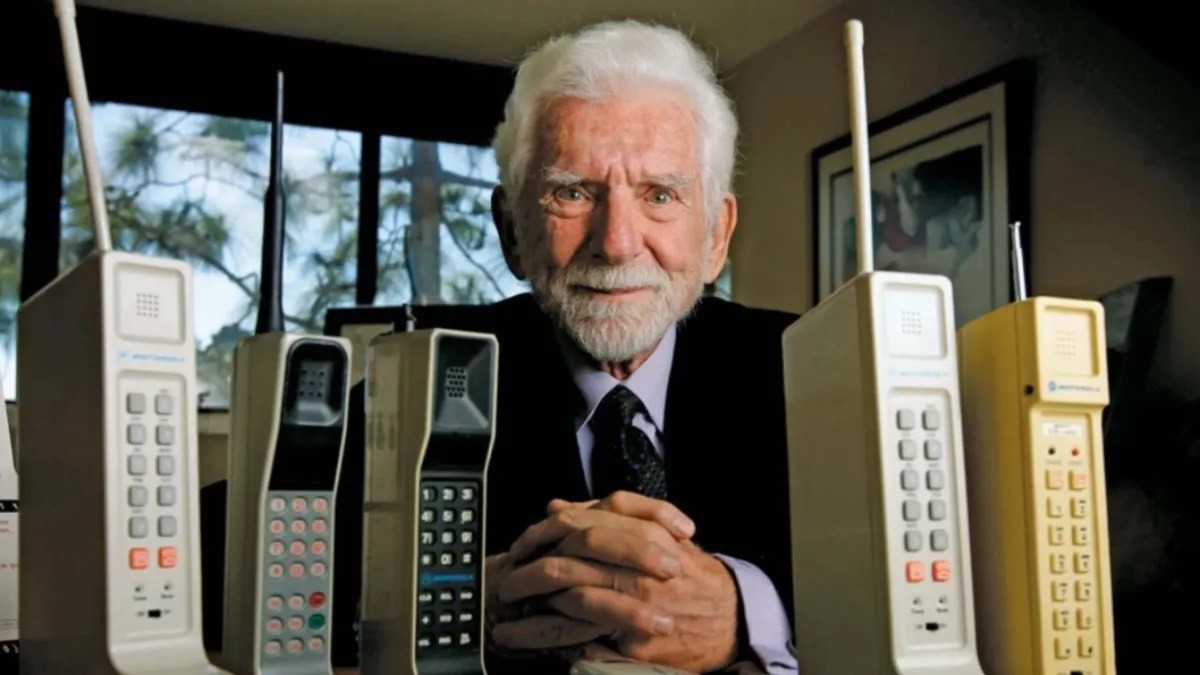
According to the AFP report, Cooper today uses a top model of the latest generation iPhone, the iPhone 14 series.
The innovator reportedly gets his hands on the latest smartphone that Apple launches every year, and gives the phone “a thorough road test” before proceeding to use it naturally.
Cooper also owns an Apple Watch, and uses his devices to speak to his acquaintances, check his email, browse videos on YouTube, and control his hearing aids.
What does Cooper feel about the modern-day smartphone
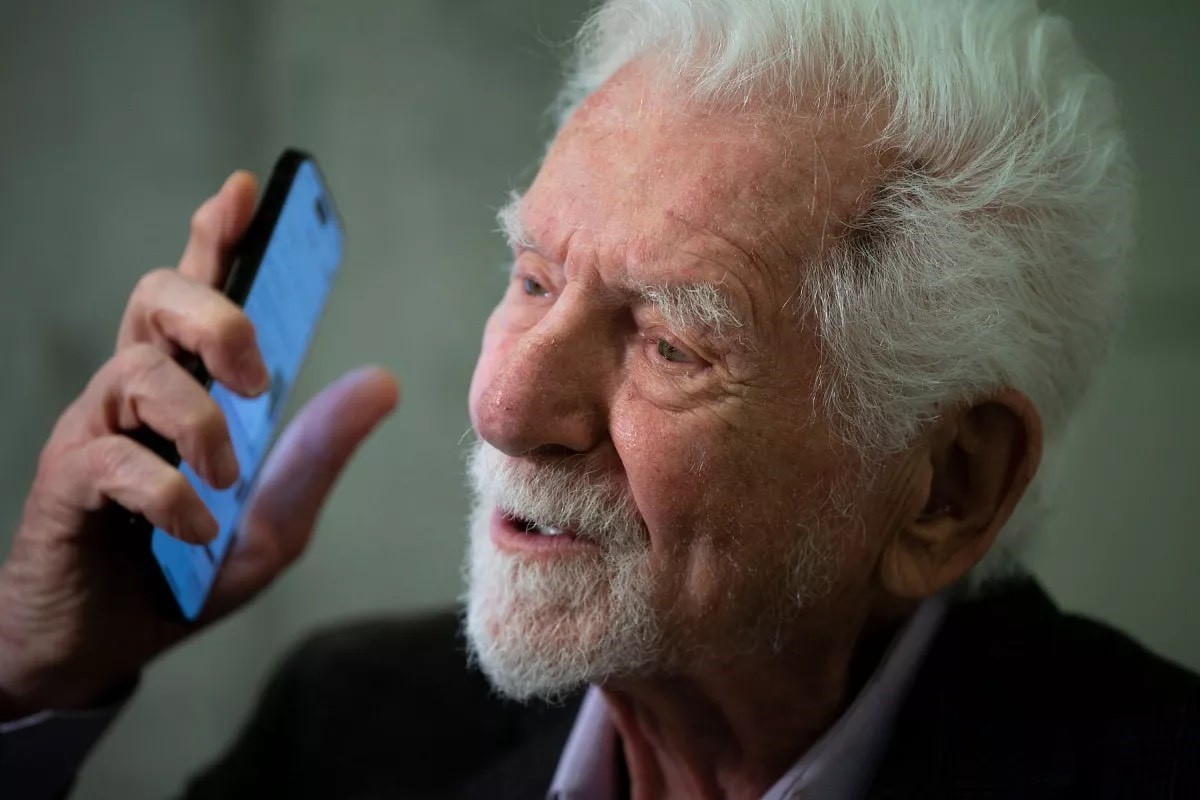
Born in December 1928, Cooper studied as an engineer in Chicago, graduating in 1950 and serving as a US submarine officer in the Korean War.
After returning and taking up a job, Cooper joined Motorola in 1954, where he would go on to spend the next 29 years of his life.
It is here that in 1973, he built the world’s first mobile phone — the Motorola DynaTAC 8000x, from which he placed the world’s first known phone call from a mobile phone.
Today, 50 years since the first phone call was placed from a mobile phone, handheld devices have come a long way.
Speaking about this, Cooper told AFP that he feels that having a “million apps” on a mobile device could be overwhelming. “I will never, ever understand how to use the cellphone the way my grandchildren do,” he said.
However, the inventor feels that the latest smartphone and its features have a long way to go, and is mostly bullish about the future.
While he says that users of new smartphones could be “a little obsessed” and be using it in situations where they should not — such as while crossing the road — he feels that handheld phones have the power to help find cures for serious diseases and ailments “within the next generation or two.”
Mobile Inventor ‘Devastated’ with Phone Use Nowadays
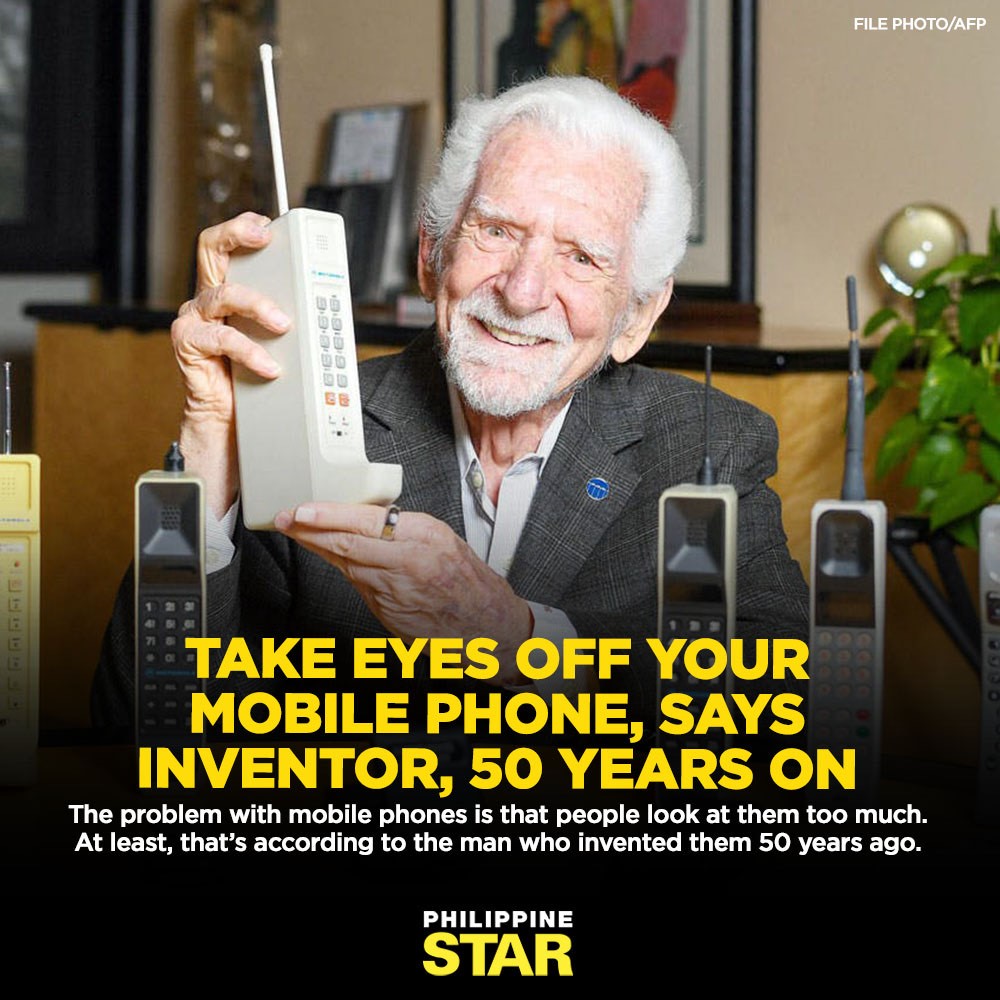
Cooper made the first mobile phone, so he has seen how they have changed over the years, from the first ones to the smartphones that are now everywhere. He recognizes the benefits of smartphones, but he also sees the problems that come with their widespread use.
“I am devastated when I see somebody crossing the street and looking at their cell phone. They are out of their minds,” Martin Cooper told AFP.
He believes it will take a few accidents before people realize the dangers of their phone addiction.
While he owns an iPhone and an Apple Watch himself, he admits that the millions of available apps can be overwhelming, and he will never understand how to use the phone the way his grandchildren and great-grandchildren do.
Many people share the concerns expressed by the phone’s inventor. According to the National Safety Council, phone use causes 1.6 million crashes each year.
Not to mention that extreme use of the device can lead to health problems and even expose people to various dangers such as scams and cyberattacks.
Outlasting the Phone Obsession
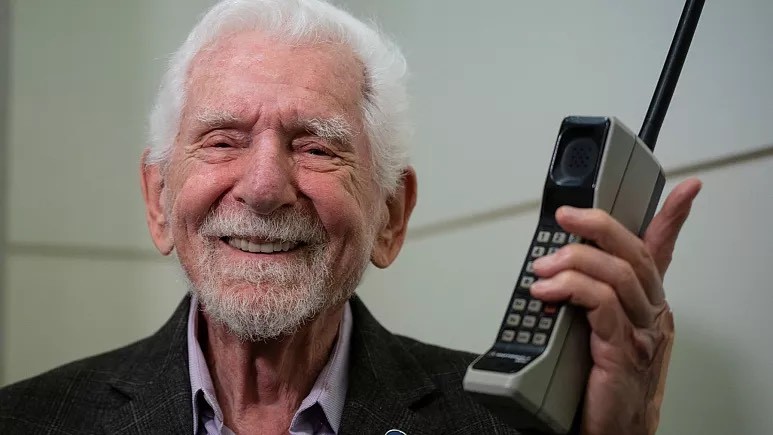
Cooper’s involvement in developing the mobile phone started in the 1970s when he worked for Motorola. He created the first mobile phone, the DynaTac ,the leader of a team of designers and engineers in 1973.
The DynaTAC weighed more than a kilogram and had a battery life of approximately 25 minutes. It was expensive, but it gave early adopters advantage, such as those in real estate.
They could show clients properties while also answering the phone, doubling their productivity.
Since then, mobile phones have come a long way. Cooper believes they have the potential to completely transform education and healthcare.
He envisions a future in which phones are linked to bodily sensors that detect illness before it develops (something Apple is already expanding with its Health App).
Cooper believes that, while the mobile phone has already become an extension of the person, we are only now beginning to understand what it is capable of.
Despite his concerns about people’s phone addiction, Cooper believes that people will eventually adapt to the new technology.
He notes that television faced similar criticisms when it first emerged, but people eventually learned to appreciate it.
In any case, Cooper is confident that the mobile phone will continue to change the world just as he imagined it would.
iPhone 14 Key Specifications
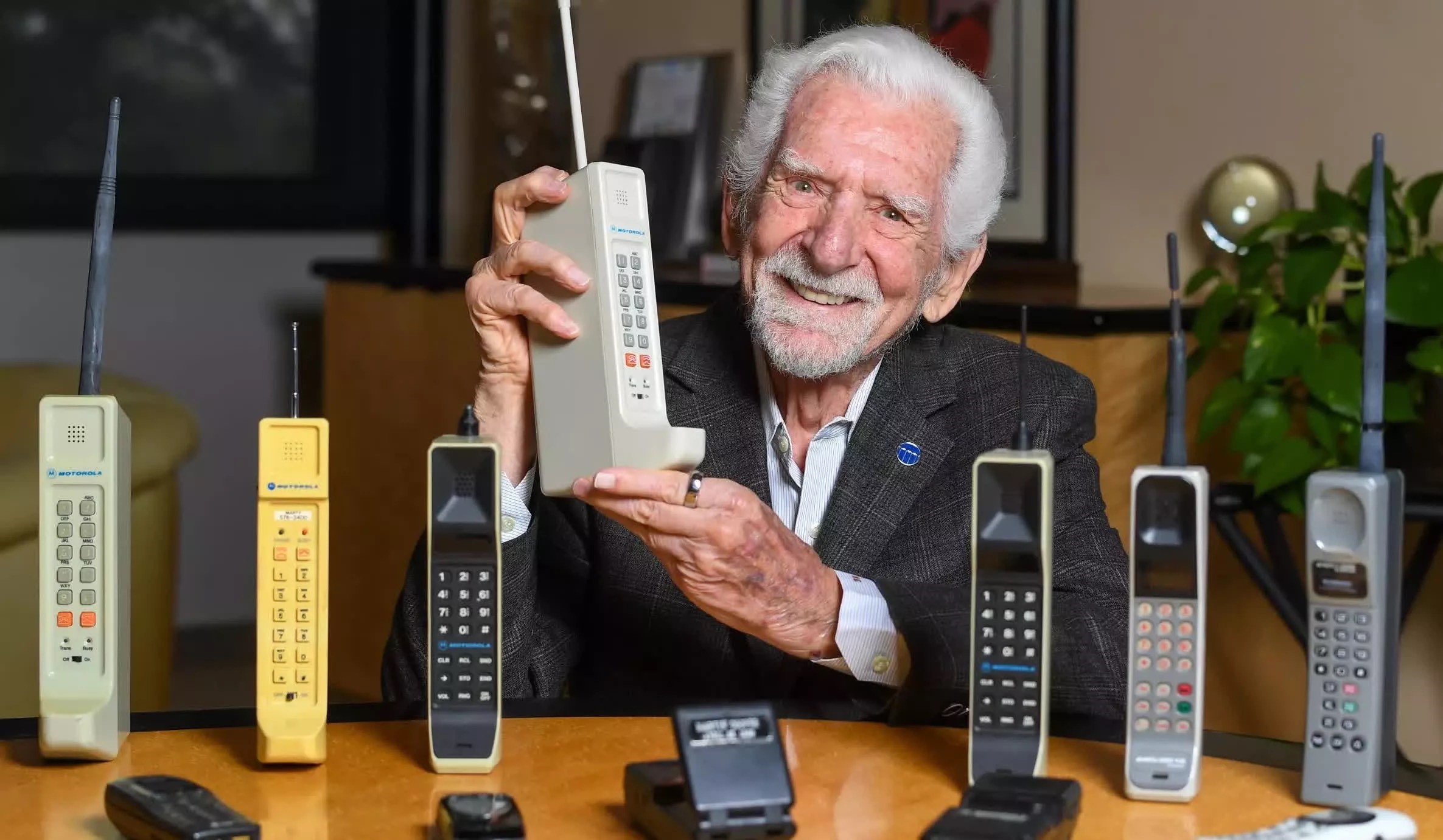
Key Specs
| RAM | 6 GB |
| Processor | Apple A15 Bionic |
| Rear Camera | 12 MP + 12 MP |
| Front Camera | 12 MP |
| Battery | 3279 mAh |
| Display | 6.1 inches (15.49 cm) |
General
| Launch Date | September 9, 2022 (Official) |
| Operating System | iOS v16 |
Performance
| Chipset | Apple A15 Bionic |
| CPU | Hexa Core (3.23 GHz, Dual core, Avalanche + 1.82 GHz, Quad core, Blizzard) |
| Architecture | 64 bit |
| Fabrication | 5 nm |
| Graphics | Apple GPU (Five-core graphics) |
| RAM | 6 GB
Best in Class
|
| RAM Type | LPDDR4X |
Display
| Display Type | OLED |
| Screen Size | 6.1 inches (15.49 cm) |
| Resolution | 1170 x 2532 pixels |
| Aspect Ratio | 19.5:9 |
| Pixel Density | 457 ppi |
| Screen to Body Ratio (calculated) | 86.89 % |
| Screen Protection | Yes |
| Bezel-less display | Yes with notch |
| Touch Screen | Yes, Capacitive Touchscreen, Multi-touch |
| Brightness | 1200 nits |
| HDR 10 / HDR+ support | Yes |
| Refresh Rate | 60 Hz |
Design
| Height | 146.7 mm Compare Size |
| Width | 71.5 mm |
| Thickness | 7.8 mm |
| Weight | 172 grams |
| Build Material | Back: Gorilla Glass |
| Colours | Blue, Purple, Midnight, Starlight, Product Red |
| Waterproof | Yes, Water resistant (up to 30 minutes in a depth of 6 meter) |
| Ruggedness | Dust proof |
Camera
| MAIN CAMERA | ||
| Camera Setup | Dual | |
| Resolution | 12 MP f/1.5, Wide Angle, Primary Camera(26 mm focal length)12 MP f/2.4, Ultra-Wide Angle Camera(13 mm focal length) | |
| Sensor | Sensor-shift Image Stabilization | |
| Autofocus | Yes, Phase Detection autofocus, Dual Pixel autofocus | |
| OIS | Yes | |
| Flash | Yes, LED Flash | |
| Image Resolution | 4000 x 3000 Pixels | |
| Settings | Exposure compensation, ISO control | |
| Shooting Modes | Continuous Shooting High Dynamic Range mode (HDR) Burst mode |
|
| Camera Features | 5 x Digital Zoom 2 x Optical Zoom Auto Flash Face detection Touch to focus |
|
| Video Recording | 3840×2160 @ 24 fps 1920×1080 @ 30 fps |
|
| FRONT CAMERA | ||
| Camera Setup | Single | |
| Resolution | 12 MP f/1.9, Wide Angle, Primary Camera(23 mm focal length, 3.6″ sensor size) | |
| Autofocus | Yes | |
| Flash | Yes, Retina Flash | |
| Video Recording | 3840×2160 @ 24 fps 1920×1080 @ 30 fps |
|
Battery
| Capacity | 3279 mAh |
| Type | Li-ion |
| Removable | No |
| Wireless Charging | Yes |
| Quick Charging | Yes, Fast, 20W: 50 % in 30 minutes |
| USB Type-C | No |
Storage
| Internal Memory | 128 GB |
| Expandable Memory | No |
| Storage Type | NVMe |
Network & Connectivity
| SIM Slot(s) | Dual SIM, GSM+GSM |
| SIM Size | SIM1: Nano, SIM2: eSIM |
| Network Support | 5G Supported in India, 4G Supported in India, 3G, 2G |
| VoLTE | Yes |
| SIM 1 |
5G Bands:
FDD N1 / N2 / N3 / N5 / N7 / N8 / N20 / N25 / N26 / N28 / N30
TDD N38 / N40 / N77 / N78 / N79 4G Bands:
TD-LTE 2600(band 38) / 2300(band 40) / 2500(band 41) / 2100(band 34) / 1900(band 39) / 3500(band 42)
FD-LTE 2100(band 1) / 1800(band 3) / 2600(band 7) / 900(band 8) / 700(band 28) / 1900(band 2) / 1700(band 4) / 850(band 5) / 700(band 13) / 700(band 17) / 850(band 18) / 850(band 19) / 800(band 20) / 1900(band 25) / 850(band 26) / 2300(band 30) 3G Bands:
UMTS 1900 / 2100 / 850 / 900 MHz
2G Bands:
GSM 1800 / 1900 / 850 / 900 MHz
GPRS:
Available
EDGE:
Available
|
| SIM 2 |
5G Bands:
FDD N1 / N2 / N3 / N5 / N7 / N8 / N12 / N20 / N25
TDD N38 / N40 / N77 / N78 / N79 4G Bands:
TD-LTE 2600(band 38) / 2300(band 40) / 2500(band 41) / 2100(band 34) / 1900(band 39) / 3500(band 42)
FD-LTE 2100(band 1) / 1800(band 3) / 2600(band 7) / 900(band 8) / 700(band 28) / 1900(band 2) / 1700(band 4) / 850(band 5) / 700(band 13) / 700(band 17) / 850(band 18) / 850(band 19) / 800(band 20) / 1900(band 25) / 850(band 26) / 2300(band 30) 3G Bands:
UMTS 1900 / 2100 / 850 / 900 MHz
2G Bands:
GSM 1800 / 1900 / 850 / 900 MHz
GPRS:
Available
EDGE:
Available
|
| Wi-Fi | Yes, Wi-Fi 6 (802.11 a/b/g/n/ac/ax), MIMO |
| Wi-Fi Features | Mobile Hotspot |
| Wi-Fi Calling | Yes |
| Bluetooth | Yes, v5.3 |
| GPS | Yes with A-GPS, Glonass |
| NFC | Yes |
| USB Connectivity | Mass storage device, USB charging |
Multimedia
| FM Radio | No |
| Loudspeaker | Yes |
| Audio Jack | Lightning |
| Audio Features | Dolby Atmos, Dolby Digital, Dolby Digital Plus |
Sensors
| Fingerprint Sensor | No |
| Other Sensors | Light sensor, Proximity sensor, Accelerometer, Barometer, Compass, Gyroscope |
FAQ’s on Martin Cooper & Phone Obsession
1) Problem with mobile phones is..’
Ans) Cooper also talked about the problems of new-age mobile phones. He said that people look at them too much as people right now “can be a little obsessed.”
“I am devastated when I see somebody crossing the street and looking at their cell phone. They are out of their minds,” the 94-year-old told the news agency.
“But after a few people get run over by cars, they’ll figure it out,” he added jokingly.
2) How are Mobile phones improving people’s lives:Cooper?
Ans) He also talked about the potential of smartphones saying that the “neat little device we all have in our pockets” has the potential to even help conquer disease one day..
“The cell phone has now become an extension of the person, it can do so many more things,” he was quoted as saying.
“And in that regard, we are just at the very beginning. We’re just starting to understand what that could do. In the future, we can expect the cell phone to revolutionise education, it will revolutionise healthcare. I know that sounds like an exaggeration, but I want you to know within a generation or two, we are going to conquer disease.”
He said that “just like his watch monitors his heart rate while he swims, and his phone monitors his hearing aids, phones will one day be connected to an array of bodily sensors that will catch illness before it develops.”
3) What is Real mobility according to Cooper ?
Ans) Cooper’s iPhone — which he says he likes to use mostly to speak to people — is certainly a very long way from the weighty block of wires and circuits that he used to make the very first mobile phone call on April 3, 1973.
At the time he was working for Motorola, leading a team of designers and engineers who were engaged in a sprint to come up with the first properly mobile technology and avoid being squeezed out of an up-and-coming market.
The company had invested millions of dollars in the project, hoping to beat out Bell System, a behemoth that dominated US telecoms for more than a century from its inception in 1877.
Bell’s engineers had floated the idea of a cellular phone system just after World War II, and by the late 1960s had taken it as far as putting phones in cars — partially because of the huge battery they needed.
But for Cooper, that didn’t represent real mobility. At the tail end of 1972, he decided he wanted a device that you could use anywhere.
So with the entire resources of Motorola at his disposal, he pulled together experts on semiconductors, transistors, filters and antennae who worked around the clock for three months.
By the end of March, they had cracked it, unveiling the DynaTAC — Dynamic Adaptive Total Area Coverage — phone.
“This phone weighed over a kilo — about two and a half pounds — and had a battery life of roughly 25 minutes of talking,” he said.
“That was not a problem. This phone was so heavy, you couldn’t hold it up for 25 minutes.”
That very first phone call didn’t have to be long. It just had to work.
And who better for Cooper to call than his rival? “So here I am standing on Sixth Avenue (in New York) And it occurred to me I had to call my counterpart at the The Bell System… Dr Joel Engel “And I said, ‘Joel, this is Martin Cooper… I’m talking to you on a handheld cell phone. But a real cell phone, personal, portable, handheld.’
“There was silence on the other end of the line. I think he was gritting his teeth.”
4) How to Conquer disease of Mobile Addiction according to Cooper ?
Ans) Those first mobile phones were not cheap at around $5,000 per handset, but they granted early adopters — who Cooper says included people trying to sell property– an edge.
“It turns out that what real estate people do is they show people houses, or they answer the phone for new clients.
“Now they could do both at the same time; it doubled their productivity.” And mobile phones continue to improve people’s lives.
“The cell phone has now become an extension of the person, it can do so many more things,” he said.
“And in that regard, we are just at the very beginning. We’re just starting to understand what that could do.
“In the future, we can expect the cell phone to revolutionize education, it will revolutionize healthcare.
“I know that sounds like an exaggeration, but I want you to know within a generation or two, we are going to conquer disease.”
Just like his watch monitors his heartrate while he swims, and his phone monitors his hearing aids, phones will one day be connected to an array of bodily sensors that will catch illness before it develops, he says.
It’s all a long way from where it started with that monster handset, but while he didn’t envisage every development, Cooper always knew the device he and his team came up with would change the world.
“We really knew that everybody someday would have a cell phone. We’re almost there.
“There are more mobile phone subscriptions in the world today than there are people. So that part of our dream has come true.”
As for the problem of people gawping at their phones too much — even as they cross the road — he’s not worried. New technology often throws up challenges.
“When television first came out, people were just hypnotized.
“But we somehow… managed to understand that there is a quality associated with looking at a television.”
Right now, we’re at the mindless staring phase with our phones, he says, but that won’t last.
“Each generation is going to be smarter… They will learn how to use the cell phone more effectively.
“Humans sooner or later figure it out.”
Also Read: 74% parents confess phone usage hurting relationship with kids: Vivo-SwitchOff Report
Also Read: MediaTek Continues its Dominance in Smartphone Chipset Market
